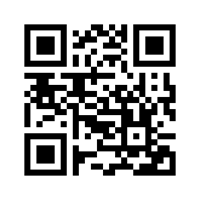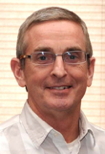
Goddard Space Flight Center, Greenbelt, Maryland 20771
ENGINEERING COLLOQUIUM
Monday, April 1, 2019 / 3:30 PM, Building 3 Auditorium

Thomas Stoughton
"Metal Forming Simulation at General Motors"
ABSTRACT -- This presentation will describe the history of GM's effort to develop a computer software system to conduct virtual simulation of the sheet metal stamping process that was intended to eliminate tool die tryout by trial and error and eliminate challenges of forming automotive components from new light-weighting sheet metals. The benefits of such a CAM system include the possibility of developing robust manufacturing processes for stamping sheet metal components resulting in lowest cost manufacturing of high quality automotive components at lowest engineering cost. A corporate wide development program called GMFORM was launched in 1983 to develop a proprietary system to accomplish this ambitious goal within 5 years. After a brief introduction of how the speaker, whose expertise was in high energy physics, became involved in this project, the presentation will describe why the project goals were originally thought to be realistic at the start of the project, and then how GM researchers' understanding of the obstacles and the true nature of the challenges they faced evolved over the course of the project. Although the GMFORM project was extended another 7 years to deal with the growing list of challenges and the project achieved many successes that were later adopted in one form or another by commercial metal forming simulation software that became available around 1995 when GM made the decision to terminate the GMFORM project, the project did not come close to achieving it ambitious goals of eliminating the need for trial and error die tryout. Nevertheless, the benefits of such a system are still as important, if not more important today as they were in 1983. So the presentation will conclude with a more mature view of the remaining obstacles, and what is being done my GM, its partners, and its competitors going forward to realize this dream.
SPEAKER -- Dr. Thomas Stoughton is a GM Technical Fellow at the GM Global Research and Development Center, where he has worked in the field of metal forming technology since 1983. He is currently an officer of the North American Deep Drawing Research Group and has published over 40 GM internal research reports and over 30 papers in journals and conference proceedings on metal forming topics. He was co-organizer of the Numisheet 2005 Conference and serves on the Numisheet Conference Steering Committee. He is also chairman of the board of directors of the International Center of Innovative Manufacturing at Deakin University, where is holds a position of Adjunct Professor. He also served as chair if the Nonlinear Strain Path Project Team of the US Auto-Steel Partnership. His major accomplishments at GM includes the development of a novel method of incorporating bending effects into a membrane FEM formulation (1986), development of a physics-based analytical model of draw bead forces (1988), which was the basis for the implementations in Optris and Autoform, development of parametric surface generation, parametric surface morphing, and mesh generation technology for use in GM internal FEM code developments and die-face engineering methods (1988-1993), contributions to fundamental science through the understanding of the effect of loading history on necking and failure modes and development of advanced forming limit criteria (1995-present), and the development of advanced constitutive models, including introduction of a novel approach to describe anisotropic behavior of metals based on principles of non-associated flow (1996-present). Dr. Stoughton received a Ph.D. in high energy physics from MIT in 1981 and a B.S. in physics from Caltech in 1976, and participated in an experimental program at Fermi National Lab while a post-doc at MIT prior to beginning a career in metal forming at GM.
Colloquium Committee Sponsor: Brent Warner
Engineering Colloquium home page: https://ecolloq.gsfc.nasa.gov